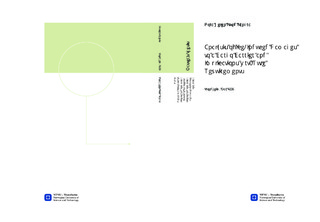| dc.description.abstract | In this thesis, an ice-induced damage to a DNV-GL registered cargo ship isinvestigated by looking into its damage survey report, and running nonlinearfinite element analyses. The analyses are used for regeneration of the damagedeformations and estimation the damage loading.The results are compared withdesign and capacity ice loads calculated from DNV-GL and IACS' rule requirementsfor the ice class of the ship studied, \cite{DNV_ICE}, \cite{IACS_PC}.The Finnish-Swedish Ice Class Rules (FSICR), which are adopted by DNV-GL, andthe International Association of Classification SocietiesUnified Requirements for Polar Class (IACS UR PC), are derived and explained with focus onplating and framing requirements. From the rules design loads and capacityloads for the frames in the side bow of the case study ship, are calculatedand applied to three different finite element models for analysis.The first model is a single frame with plate flange. The second istwo neighbouring frames with two tripping brackets in between.The third model is the ship side damage area.In addition to the design loads from the rules, five proposed load cases areanalyzed for the ship side model. The resulting model deformations arecompared with deformation measurements from photosgiven in the surveyor report, in order to evaluate the applied load cases. Aresemblance in the deformations indicates a load case that resembles theoriginal damage load.The analyses of the frame models with design and capacity loads form the rulesshow that the frames have a considerable amount of capacity beyond the rulecalculations. In one of the analyses a frame capacity of $15MPa$ is obtained,while the design capacity is $5MPa$.For the ship side model, only one of the five proposed load cases provesto be successful.Measurements of the deformation of the model are done, and they coincide withthe photos where the deformations are large, but give a poor match elsewhere.A pressure of $6.9MPa$ over an area of $5.8m^2$ is neededto reproduce the largest of the deformations seen in the photos.The ship side analysis shows that a force about ten times the FSICRdesign load, or twice the IACS PC design load, is needed to produce thedeformations seen in the photos.The large difference in the ratio for the FSICR and the IACS PCforce originate from the difference in the size of the load application area.The rules appear to present very conservative design loads, as the finiteelement analyses reveal a considerable amount of load carrying capacity beyondthe design load level.This is because the rules are derived to be conservative, hence,they are not suited for calculation of the actual capacity of a structure. For the ship side model, an ice class 3-5 notations higherthan the notation it is classified for is needed to withstand the damageloading, depending on how the numbers are evaluated. This implies that theship in question has been sailing in waters with ice conditions it was not designed for.Due to a lot of uncertainty related to the photo measurements, and the many assumptionsmade for the analyses' input, an uncertainty is related to the output of the analyses,and the conclusions based on these.This thesis is conducted in cooperation with DNV-GL, Tankers and Dry Cargo Section,Høvik, Norway. They supplied survey reports, ship drawings, and supervisionalong the way. The vessel documents are applied anonymously within theproduction of this report.In order to realize the true potential of ice damage investigation, more precisedocumentation of the scale of the actual damages must be recorded. | nb_NO |

